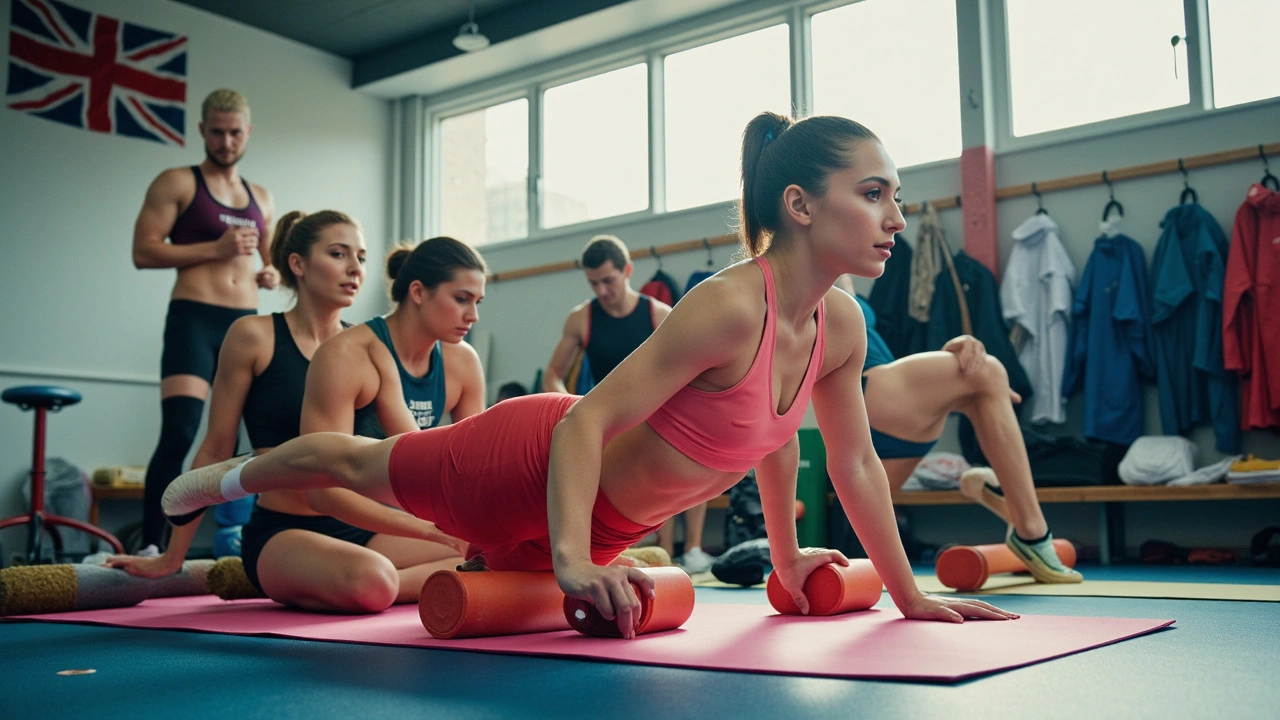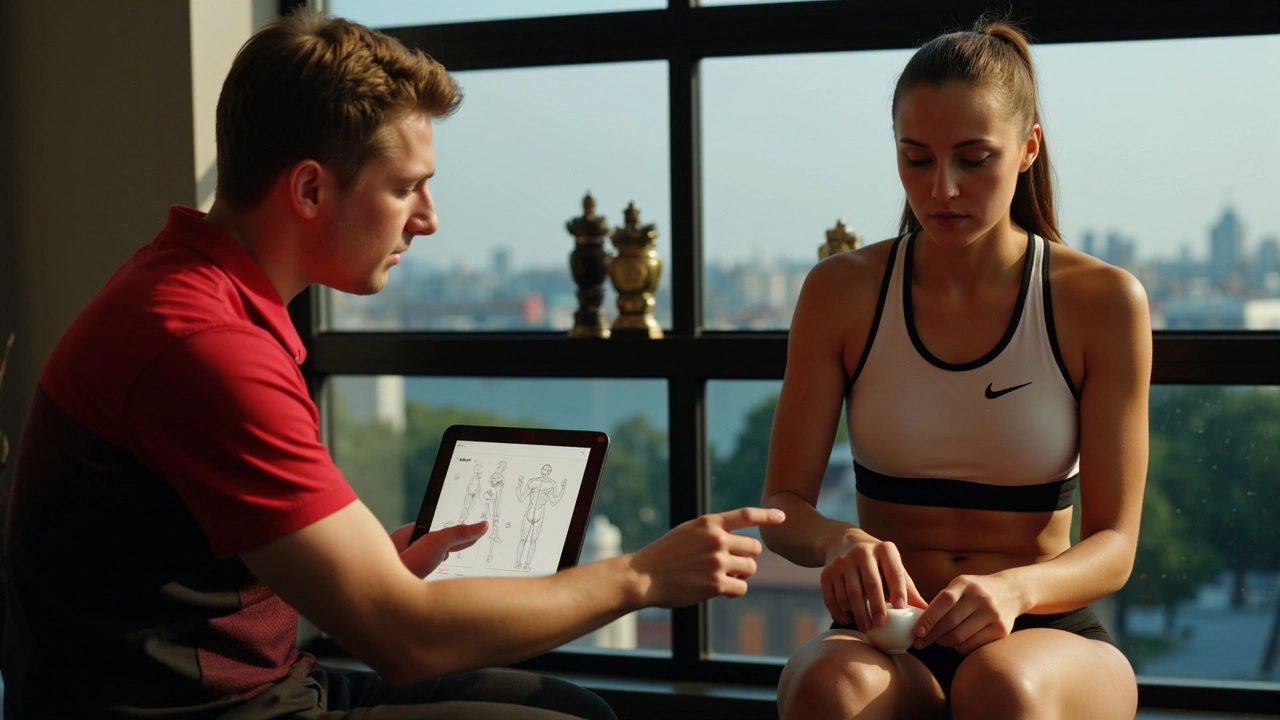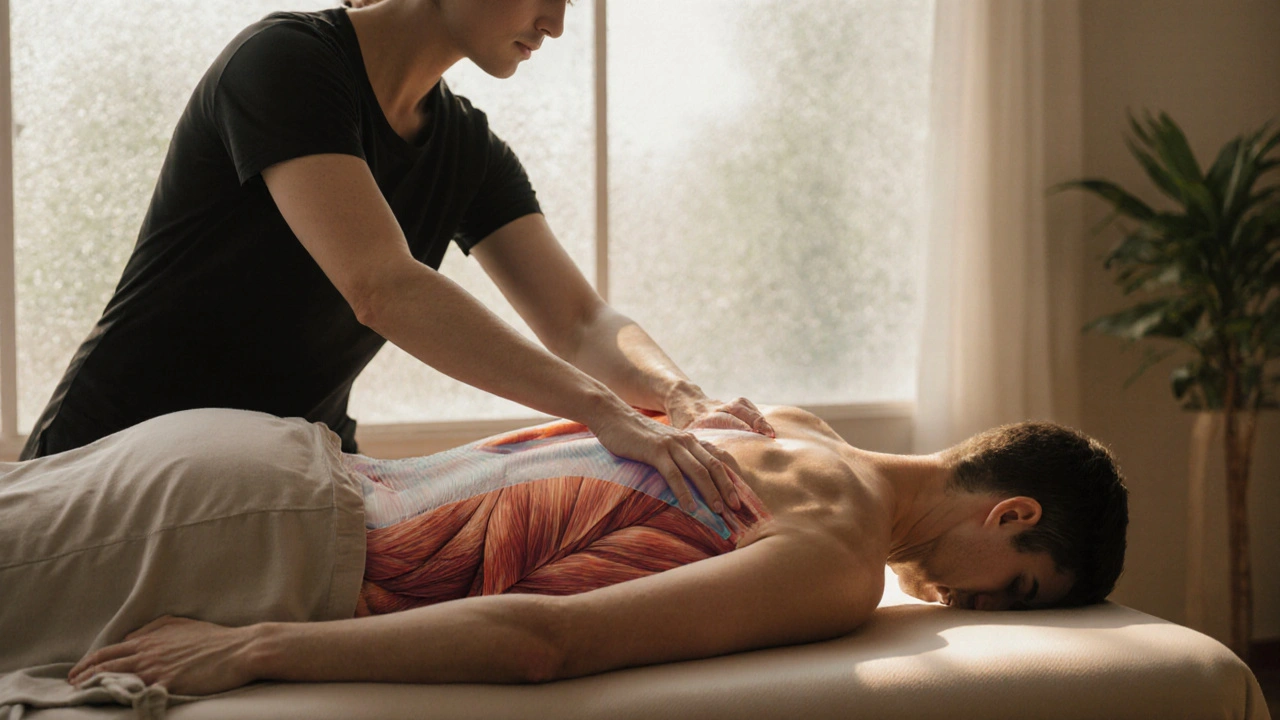Massage Therapist Techniques for Athletes: Boost Performance and Recovery

Ever watch a pro athlete getting a deep rubdown on the sidelines and wonder what’s actually happening? Massage therapy isn’t just about feeling good—especially for athletes. It targets the muscles and connective tissue that get thrashed during tough workouts, races, or games. Think of it as part-tune up, part-repair magic.
What sets sports massage apart is how it focuses on both performance and recovery. It's not just about relaxing—therapists zero in on boosting blood flow, stretching tight spots, and helping your body clear out the waste that builds up when you push hard. You don’t need to be in the NFL to benefit, either. Running your first 5K or playing pickup basketball? Your muscles can use the extra help, too.
Some folks swear by routine massages for dodging injuries and bouncing back faster after pushing themselves. Even science backs it up: studies out of places like Ohio State University found that massage after tough workouts can help muscles heal faster and work better next time around. So if you’re looking for real results, not just short-term relief, these techniques offer something serious for anyone wanting to up their game.
- Why Athletes Need Targeted Massage
- Popular Massage Techniques That Work
- Tips for Maximizing Results
- Picking Your Massage Pro Like a Champ
Why Athletes Need Targeted Massage
Athletes put their bodies through a lot—strains, tiny tears, tight muscles, and plain old soreness are part of the deal. That’s exactly why targeted massage therapy isn’t just “nice to have.” It’s a smart move if you want to stay in the game and keep crushing your goals.
Let’s break it down: exercise and sports push your muscles and joints way beyond average daily use. That pressure leads to muscle fatigue, stiffness, and sometimes inflammation. Left unchecked, this stuff adds up and wrecks your performance—or worse, sidelines you with an injury. Targeted massage steps in to undo some of that wear and tear.
- It helps loosen stubborn knots and scar tissue that build up after hard training or minor strains.
- By increasing blood flow, your muscles get more of the oxygen and nutrients they need to bounce back fast.
- Massage can flush out waste products that pile up during tough exercise, like lactic acid, which often cause those burning aches.
- Nerves can calm down, which helps with pain relief and lets you move better right away.
Check out some quick facts on why this matters. Recent research from the University of California showed that athletes who got regular massages reported up to 30% less delayed onset muscle soreness (DOMS) and returned to full training 1-2 days faster than those who skipped hands-on recovery. Here’s how those numbers stack up in real life:
| Benefit | No Massage | With Massage |
|---|---|---|
| Muscle Recovery Time | 3-4 days | 2-3 days |
| Average Muscle Soreness (1-10 scale) | 7 | 5 |
| Missed Training Sessions per Month | 2 | 0-1 |
What’s cool is that massage works for every level, whether you’re just starting CrossFit or racing triathlons for years. The main idea is simple: help your body repair, reduce injury risk, and feel fresh for your next big workout. That’s why more trainers and coaches are sending their athletes to get massages as part of a regular routine, not just after something goes wrong.
Popular Massage Techniques That Work
Let’s break down the real massage moves therapists rely on for athletes. Not all massages feel the same because different needs call for different tools. Here’s what usually makes a serious difference for muscle health and athletic edge.
- Sports Massage: This is the go-to for athletes. It’s all about prepping your body to perform or helping it recover after. Therapists blend deep tissue work, stretching, and targeted pressure, all tuned for sports-specific muscle groups. That means more flexibility and less soreness down the line.
- Deep Tissue Massage: When muscles feel like they’re full of knots, this technique digs right in. Slow strokes and firm pressure reach those deeper layers where tension hides. It’s pain-with-a-purpose that helps break up scar tissue, making stiff muscles bounce back quicker.
- Trigger Point Therapy: Ever get a sharp pain that just won’t go away? Therapists zero in on these trouble spots with short bursts of pressure. This helps relax tight areas and sends relief washing through places that feel stuck.
- Myofascial Release: Sometimes muscle pain is rooted in the body’s web of connective tissue. Gentle, sustained pressure here helps lengthen and loosen things up. Athletes love it for the extra range of motion, especially before a big competition.
You might see therapists mixing these up depending on what’s sore, tight, or recovering. No two sessions ever look exactly the same. Some even toss in stretching (think assisted stretches) to help muscles recover smoother and stay limber.
So, how well do these really work? Here’s a handy table with numbers showing how some of these techniques have stacked up in research studies:
| Technique | Reported Benefits (Study Highlights) | Avg. Recovery Improvement |
|---|---|---|
| Sports Massage | Reduced muscle soreness within 24-48 hours (British Journal of Sports Medicine, 2021) | 20% faster perceived recovery |
| Deep Tissue Massage | Improved flexibility and range of motion (Journal of Strength & Conditioning Research, 2022) | 12% increase in flexibility |
| Trigger Point Therapy | Lowered pain in chronic muscle knots (Pain Research journal, 2023) | Up to 35% decrease in pain rating |
| Myofascial Release | Improved mobility for hamstring strains (Sports Health, 2020) | 15% boost in range of motion |
If you’re after the best results, ask your therapist which massage therapy approach fits your training plan and goals. Sometimes a quick tune-up is plenty after a hard run. At other times, you’ll need a longer session to really loosen up old injuries. Don’t be shy about speaking up—your feedback helps them tweak each technique for your body.

Tips for Maximizing Results
Getting the most out of your massage isn’t just about showing up. There are a few things you can do before, during, and after your session to make sure that time and money pay off—especially if you’re serious about performance or recovery.
- Hydrate before and after: Water helps your body flush out the stuff that built up in your muscles during exercise and massage. Try drinking a couple of big glasses before and after your session. Dehydration makes you stiff and messes with recovery.
- Talk to your massage therapist: Don’t be afraid to mention specific pain points, goals, or recent workouts. A good therapist will adjust techniques based on what you need that day—be honest if something feels off or too intense.
- Schedule smart: Don’t squeeze your massage right before a big competition. Most therapists and coaches agree: deep-tissue work is best at least 24-48 hours before any serious event. After a competition or tough workout, lighter techniques help, but don’t go super deep unless you have time to recover.
- Combine massage with good habits: Regular stretching, proper warm-ups, and smart cool-downs boost the benefits of your session. Massage isn’t magic—it works best when you support it with other recovery methods, like sleep and nutrition.
One overlooked tip: track how your body responds. Jot down how you feel, how you perform, and how quickly you bounce back after each session. Some athletes notice big differences depending on the technique, timing, or even therapist.
| Tip | Why It Works |
|---|---|
| Hydrate | Boosts muscle recovery and reduces soreness |
| Talk to Therapist | Customizes massage to your needs in real-time |
| Schedule Smart | Avoids soreness or fatigue before big events |
| Pair with Good Habits | Multiplies the benefits of massage therapy over time |
| Track Results | Helps you find exactly what works best for your body |
It sounds simple, but these tweaks make a real difference. For example, a 2018 study from the Journal of Athletic Training found athletes who actively communicated with their therapists and reported their results saw bigger gains in flexibility and less delayed-onset muscle soreness. The little things, like chugging water or adjusting your massage schedule, add up big over a month or season.
Picking Your Massage Pro Like a Champ
Not every massage therapist is right for athletes, and picking the wrong one can be a waste of money—or even set you back. If you want the biggest boost to your athletic performance, you need a pro who gets the demands your body is going through. Regular spa massages might feel nice, but sports-focused bodywork dives deeper and needs special know-how.
Here's what to look for when searching for the right massage therapist:
- Certification and Experience: Look for someone certified in sports or clinical massage, not just relaxation massage. Extra points if they mention athletic backgrounds or have worked with teams.
- Questions They Ask: A good pro won’t just ask if you want more pressure—they’ll want to know about your sport, playing schedule, where you feel tight, past injuries, and training goals.
- Techniques Used: Ask if they use myofascial release, trigger point therapy, or deep tissue—common for working on athletic bodies. Swedish massage might be relaxing, but it won’t hit the problem spots from sprints or squats.
- References and Reviews: Don’t be shy about asking for feedback from other athletes. Check online reviews, especially ones mentioning performance or recovery results.
Time matters, too. The American Massage Therapy Association recommends at least 30 to 60 minutes for targeted sessions, depending on your sport and how often you train. For serious athletes, mixing up quick pre-event rubdowns with longer recovery sessions after hard events often gets the best results.
| What to Ask | Why It Matters |
|---|---|
| Specialization in Sports Massage? | Ensures they understand athletic injuries and muscle use. |
| Familiarity with Your Sport? | Sports have different strain patterns—a runner’s needs aren’t the same as a swimmer’s or a weightlifter’s. |
| References from Other Athletes? | Direct feedback shows how well the massage therapist helps with real athletic goals. |
| Flexible Scheduling? | Big game or race coming up? You want someone who can fit you in when you actually need them most. |
Stats tell the story, too. According to the National Center for Complementary and Integrative Health, 55% of massage therapy users in the U.S. report doing so for medical reasons, including sports recovery. Therapists with extra qualifications are found to deliver better outcomes—something you can feel after a few sessions.
Here’s a pro tip: Book just one session at first. How do you feel two days later? Notice any gains in flexibility, soreness, or energy? If you do, you probably found your new secret weapon for staying in the game and making every workout count.



